This blog post discusses the impact of the Fourth Circuit’s ruling regarding “literally false” advertising claims. The case is In re GNC Corp., 789 F.3d 505 (2015). An earlier blog post describing the facts of the case, as well as the merits of the Fourth Circuit’s decision, can be found here.
Consider the following scenario. Your company has been manufacturing a line of supplements for over a decade, and the bottle lists health claims based on reasonable scientific evidence. Suddenly, controversy strikes: there is new evidence indicating that the products are useless, and the long-held belief about the supplements’ efficacy becomes the minority position. Are you, as seller, liable to consumers for false advertising? Should a jury sort through the studies and pick which side is meritorious?
This was the heart of the dispute in the GNC case, and it was essentially a matter of first impression for the Fourth Circuit. What result?
The Court held for GNC, and the decision was no doubt a win for supplement manufacturers and sellers nationwide. A “battle of the experts” did not necessitate a jury trial, nor did it forestall judgment in the manufacturer’s favor.
Scientific evidence is neither static nor consistent; there can be two pools of reasonable evidence on either side of a medical controversy, and the minority position may well end up being right. The Fourth Circuit’s June 19, 2015 decision reflects this line of reasoning: so long as GNC, or any other seller, has reasonable support for the claims on the bottle, the statements cannot be literally false—even if the vast weight of competent clinical evidence suggests otherwise. To prevail in the Fourth Circuit, plaintiffs must allege at the pleading stage that all reasonable experts in the field would agree that the representations are false. Unsurprisingly, the decision was criticized as a crushing blow to consumers and class action plaintiffs.
But retailers and manufacturers should not celebrate too quickly, and class action law firms can put away their tissue boxes. While the Fourth Circuit ambitiously articulated the “federal standard” for the various state consumer deception statutes at issue, courts are split about following the decision. Two federal district courts in California are at the helm of the divide.
In Zakaria v. Gerber Prods. Co., District Court Judge John A. Kronstadt held that the Fourth Circuit’s interpretation of California state law was “not persuasive.” Zakaria involved a putative class action against Gerber, a purveyor of baby food and baby products, regarding Good Start Gentle whey formula. Plaintiffs alleged that, first, Gerber misrepresented health claims associated with Good Start Gentle, and second, Gerber misstated the Food and Drug Administration’s endorsement of the health claims. The Court rejected Gerber’s motion to dismiss and motion for reconsideration, even though Plaintiffs did not allege that all experts would disagree with Gerber’s position. Judge Kronstadt was persuaded, in large part, by a single study concluding that whey formula did not offer the advertised health benefits.
The high pleading bar articulated in the GNC case—expert consensus of falsity—was rejected in the Zakaria decision. Although GNC briefly addressed California state law claims, Judge Kronstadt found the Fourth Circuit’s interpretation to conflict with prior precedent. By denying the motion to dismiss, Judge Kronstadt put a thumb on the scale in favor of developing a factual record beyond the pleading stage. The Complaint was sufficient by merely raising a question of fact, and the case was permitted to proceed to trial.
Similarly, in Mullins v. Premier Nutrition Corp., District Court Judge Richard Seeborg held that a “battle of the experts” raises triable issues of fact and is not appropriate for disposal on summary judgment. Interestingly, the case involved the same primary ingredients at issue in the GNC matter—glucosamine and chondroitin—as well as similar health claims about improved joint health. Plaintiffs alleged that Defendant’s advertising was both literally false and misleading. Regarding literal falsity, the Court indicated that a jury would not be robbed of its role in evaluating the reasonableness of the experts and evidence. This was a clear rejection of the GNC standard. Regarding misleading advertising, the Court again seemed to defy the Fourth Circuit’s decision. To prove that health claims are misleading, Plaintiffs could “show[] that the vast weight of the competent scientific evidence establishes that th[e] health claims are false.” In other words, Judge Seeborg found that scientific consensus of falsity was not a prerequisite for Plaintiffs to prevail. A claim could be misleading even if “a minority of scientists” believe that the claims are accurate. Under this theory of consumer deception, a jury’s determination may possibly replace the views of a minority of scientists.
Of course, not all courts have rejected the GNC ruling. In Medeiros v. Lenovo, District Court Judge Leo T. Sorokin adopted the GNC standard in addressing a computer battery life claim of “up to 9 hours.” Since Plaintiffs failed to allege that “consumers could never obtain nine hours of battery life,” the Court granted Lenovo’s motion to dismiss. In addition, a federal court in West Virginia, which is bound by the Fourth Circuit, will be grappling with the GNC ruling in Midwestern Midget Football Club Inc. v. Riddell, Inc. At issue are concussion-reduction claims in connection with a line of football helmets.
It will be interesting to see if, and how, other courts outside of the Fourth Circuit’s jurisdiction follow the GNC decision.
Gia M. Wakil is a J.D. candidate, 2018, at NYU School of Law.
